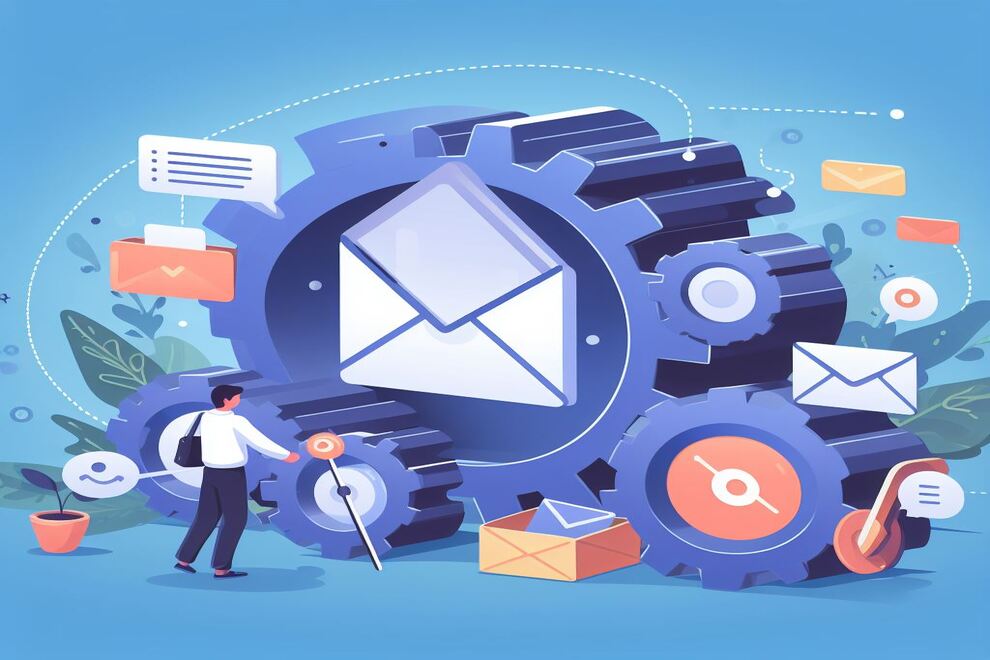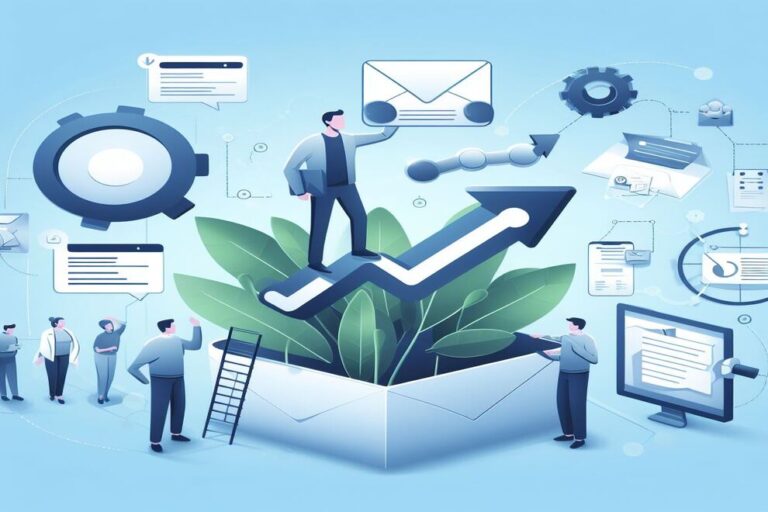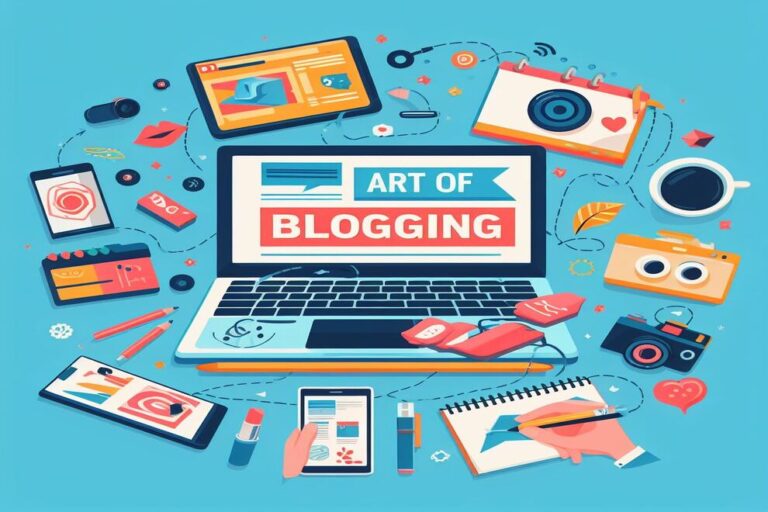Email Automation: Streamlining Your Marketing Efforts

Email marketing is a tried-and-true strategy for connecting with your audience, building relationships, and driving business growth. However, managing email campaigns manually can be time-consuming and challenging to scale. That’s where email automation comes in. In this comprehensive guide, we’ll explore the world of email automation, its importance, how to get started, and best practices to streamline your marketing efforts.
Understanding Email Automation
What Is Email Automation?
Email automation is the use of technology to send personalized and targeted emails to your subscribers at predetermined times or based on specific triggers. It’s a way to automate various aspects of your email marketing, making it more efficient and effective.
Why Is Email Automation Important?
Email automation offers several key benefits:
- Time Savings: Automation reduces the need for manual tasks, allowing you to focus on more strategic aspects of your marketing.
- Consistency: It ensures that your subscribers receive timely and relevant messages, leading to improved engagement.
- Personalization: Email automation enables you to send tailored content based on subscriber behavior and preferences.
- Scalability: You can scale your email marketing efforts to reach a growing audience without significantly increasing your workload.
- Data-Driven Decisions: Automation provides valuable data that helps you understand what’s working and what needs improvement in your email campaigns.
- Lead Nurturing: It assists in moving leads through the sales funnel, increasing the likelihood of conversions.
Key Elements of Email Automation
Email automation involves several key elements that contribute to its effectiveness:
1. Triggers
Triggers are the actions or events that initiate an automated email. Common triggers include subscribing to your email list, making a purchase, abandoning a cart, or clicking on a specific link.
2. Workflows
Workflows are the sequences of automated emails that are set in motion by triggers. They define the path subscribers follow based on their actions and responses.
3. Segmentation
Segmentation is the practice of categorizing your subscribers into different groups based on specific criteria, such as demographics, behaviors, or purchase history. Segmented lists allow for more targeted and relevant email content.
4. Personalization
Personalization involves tailoring email content to individual subscribers or segments. This can include using the recipient’s name, providing personalized product recommendations, and more.
5. Dynamic Content
Dynamic content allows you to display different content within the same email based on the recipient’s characteristics or behavior. For example, you can show different products to first-time visitors versus loyal customers.
6. A/B Testing
A/B testing involves sending two different versions of an email to a subset of your subscribers to determine which performs better. This allows you to refine your emails for optimal results.
Getting Started with Email Automation
Implementing email automation requires a systematic approach. Here are the steps to get started:
1. Define Your Goals
Start by defining your email automation goals. What do you want to achieve with automated emails? Whether it’s increasing sales, nurturing leads, or improving customer retention, clear goals guide your strategy.
2. Select an Email Marketing Platform
Choose a reputable email marketing platform that offers robust automation features. Popular options include Mailchimp, HubSpot, ActiveCampaign, and ConvertKit.
3. Build Your Email List
Your email list is the foundation of your email automation strategy. Grow your list by offering valuable content, incentives, and clear calls to action on your website and social media.
4. Create Valuable Content
Develop engaging and valuable content that resonates with your target audience. Consider what information or offers would be most beneficial to your subscribers.
5. Segment Your List
Segment your email list based on demographics, behaviors, and preferences. This enables you to send highly relevant content to different groups.
6. Design Email Templates
Design visually appealing email templates that reflect your brand’s identity. Most email marketing platforms offer customizable templates to simplify the design process.
7. Set Up Triggers
Identify the triggers that will initiate your automated emails. For example, you can set up triggers for welcome emails, abandoned cart emails, or post-purchase follow-ups.
8. Create Workflows
Develop automated workflows that outline the sequence of emails subscribers will receive based on their actions and triggers.
9. Test Your Campaigns
Before launching your email automation, thoroughly test your campaigns to ensure they function correctly, and that emails display correctly across devices.
10. Monitor and Analyze
Regularly monitor the performance of your email automation campaigns. Pay attention to open rates, click-through rates, conversion rates, and unsubscribe rates.
Best Practices for Email Automation
To maximize the effectiveness of your email automation, consider the following best practices:
1. Provide Value
Every email you send should provide value to your subscribers. Whether it’s educational content, exclusive offers, or useful information, ensure that your emails are worth opening.
2. Optimize Subject Lines
Craft compelling subject lines that grab the recipient’s attention. Personalization and curiosity can be effective techniques.
3. Use Clear Calls to Action (CTAs)
Each email should include a clear and enticing call to action (CTA) that directs the recipient on what to do next. Whether it’s making a purchase, reading an article, or downloading a resource, CTAs are essential.
4. Test and Iterate
Continuously A/B test different elements of your emails, such as subject lines, content, and CTAs. Use the data to refine your campaigns for better results.
5. Avoid Overcommunication
While automation is efficient, it’s essential not to overwhelm subscribers with excessive emails. Set a reasonable frequency for your email sends.
6. Personalize Content
Leverage segmentation and dynamic content to personalize email content based on the recipient’s interests and behavior.
7. Maintain Relevance
Ensure that your emails remain relevant to the recipient’s stage in the customer journey. A new subscriber should receive different content than a loyal customer.
8. Monitor Deliverability
Pay attention to email deliverability by regularly cleaning your email list and following best practices to avoid spam filters.
9. Analyze Data
Use data and analytics to gain insights into subscriber behavior and the performance of your email automation. Adjust your strategy based on the data.
10. Keep the Customer in Mind
Always consider the recipient’s experience and how your emails benefit them. Emails that are customer-centric are more likely to succeed.
Case Studies: Success with Email Automation
Let’s explore two case studies that demonstrate the effectiveness of email automation:
1. Airbnb
Airbnb uses email automation to create a personalized and engaging experience for its users. They send tailored emails to hosts, guests, and prospective guests based on their interactions with the platform. These emails include booking confirmations, host recommendations, and reminders to complete bookings.
2. Amazon
Amazon employs email automation to enhance its e-commerce experience. They send personalized product recommendations, order confirmations, and abandoned cart reminders. These automated emails contribute to increased sales and customer loyalty.
Measuring the ROI of Email Automation
Measuring the return on investment (ROI) of email automation involves tracking key metrics and analyzing the impact on your business. Consider the following metrics for measurement:
- Conversion Rates: Measure the percentage of subscribers who take the desired action after receiving an automated email, such as making a purchase or signing up for a webinar.
- Revenue Generated: Calculate the revenue directly attributed to your email automation campaigns. Track the sales resulting from email clicks and conversions.
- Customer Retention: Assess the impact of email automation on customer retention and lifetime value. Measure the percentage of retained customers who continue to engage with your brand.
- Email List Growth: Monitor the growth of your email list as a result of automation efforts, including lead nurturing and opt-in forms.
- Cost Savings: Evaluate the cost savings achieved through automation, such as reduced manual labor and increased efficiency.
- Customer Engagement: Measure engagement metrics, including open rates, click-through rates, and response rates, to assess the effectiveness of your email campaigns.
The Future of Email Automation
The future of email automation is promising, with several trends and developments on the horizon:
- AI-Powered Personalization: Artificial intelligence will play a significant role in delivering highly personalized and relevant content to subscribers.
- Behavior-Based Triggers: Email automation will become more sophisticated with behavior-based triggers that respond to user actions in real-time.
- Multi-Channel Integration: Email automation will seamlessly integrate with other marketing channels, allowing for more comprehensive and cohesive marketing strategies.
- Interactive Email Content: Emails will become more interactive, featuring elements like quizzes, surveys, and product previews.
- Enhanced Analytics: Advanced analytics will provide deeper insights into subscriber behavior, enabling more targeted and effective campaigns.
- Privacy and Data Compliance: As data regulations evolve, email automation will prioritize privacy and compliance with data protection laws.
Conclusion
Email automation is a powerful tool for streamlining your marketing efforts, engaging your audience, and driving business growth. By implementing automation, you can deliver personalized and timely content to your subscribers, nurture leads, and build lasting relationships with customers. The efficiency and scalability of email automation make it an essential component of modern marketing strategies. Embrace email automation to make your marketing efforts more effective, and as the field continues to evolve, explore new opportunities to connect with your audience and achieve your business goals.





